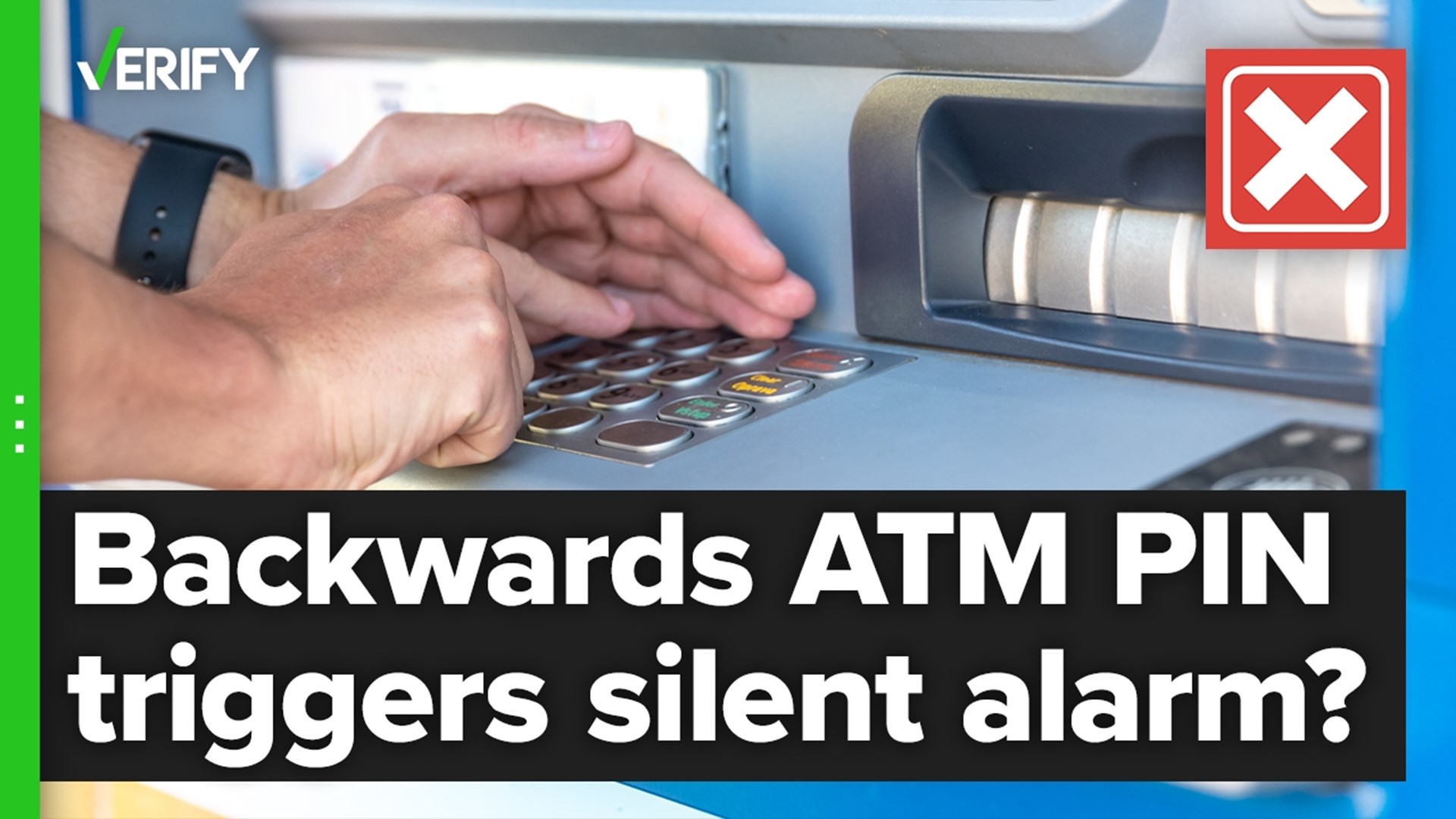Anyone who has used an automated teller machine, or ATM, before knows you typically need to enter a PIN, or personal identification number, in order to access your bank account information and money.
But do ATMs also have a way to alert police if you’re in danger? VERIFY viewer Tamara recently emailed our team asking if people should enter their PIN backward if they’re being robbed at the ATM in order to alert the police. Similar claims have circulated on social media for years.
“If you are being forced to withdraw money from the ATM and enter your pin backward (for example, if your PIN is 5623 and you enter it as 3265), does that alert the bank and authorities to get help?” Tammy asked.
THE QUESTION
Will entering your PIN number backward at the ATM call for help in an emergency?
THE SOURCES
- U.S. Patent Office
- Federal Trade Commission (FTC)
- Diebold Nixdorf, an American multinational financial and retail technology company
- Los Angeles Police Department
THE ANSWER
No, entering your PIN number backward at the ATM will not call for help in an emergency.
WHAT WE FOUND
“If you are being forced to withdraw money from the ATM and enter your PIN backward, it does not alert the bank and authorities to get help,” Tiffini Bloniarz, the senior manager of communications at Diebold Nixdorf, one of the largest ATM manufacturers in the world, told VERIFY.
In an email, Bloniarz said reverse PIN claims are “an urban legend that probably got its start with old legislation that proposed the idea.” VERIFY found that these claims have been circulating online since at least 2006.
“We’re happy to respond as we also want to help stop this false information from spreading. We are asked about this technology every few years when the topic resurfaces online,” Bloniarz said.
The idea of a reverse PIN is a real concept that was first patented in 1994, but it was never programmed into ATM machines.
Diebold Nixdorf said in 2007 that banks are generally opposed to the reverse-PIN system because of safety concerns. They wrote that many bankers were worried customers might hesitate or fumble while trying to enter their PIN backward during an ATM robbery, which could potentially increase their chances of being hurt.
In addition, in a 2010 report about ATM safety, the Federal Trade Commission (FTC) concluded that in most cases, the robbery suspect would already be gone by the time police arrived at the scene.
At different points over the years, state lawmakers in Illinois, Georgia and Kansas have all considered mandating banks install reverse PIN alarms on ATMs. Only Illinois was partially successful — a bill that was signed into law said ATMs “may be designed and programmed” with the feature, but did not require it.
But Diebold Nixdorf says it has not implemented reverse PIN or “duress code” technology at any of its ATMs. Bloniarz also said the company is “not aware of any other ATM manufacturers that have installed this technology in the U.S. or anywhere else.”
More from VERIFY: No, a QR code cannot ‘force’ a payment
Diebold Nixdorf advises people to follow a few simple rules to keep themselves safe when using an ATM, such as:
- Never write your PIN down — especially not on your debit card.
- Be aware of your surroundings while using an ATM and choose a location that provides adequate lighting.
- Don’t use ATMs that don’t look secure. If it feels sketchy, wait until you find a different terminal.
- Don’t throw your receipt away near the ATM.
- Shield the PIN pad while you enter your PIN to avoid shoulder-surfing.
- Slow down. Make sure you don’t leave your ATM card or cash in the machine if you’re in a rush.
If you’re ever threatened at an ATM, the Los Angeles Police Department recommends cooperating with the robbers to ensure your safety, then contacting the police after the robbery to make a police report.

